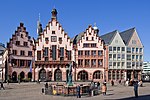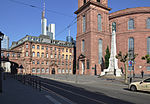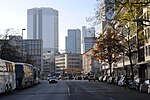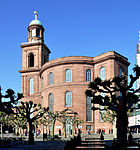Salzhaus (Frankfurt am Main)
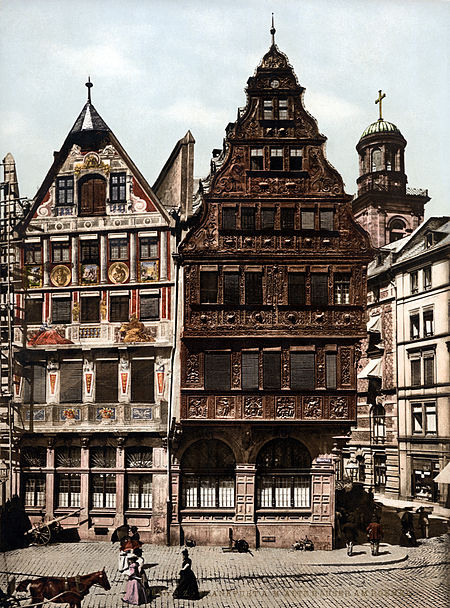
The Salzhaus (English: Salt House) is a historic building in the German city Frankfurt am Main. It forms the northeastern part of the Frankfurt City Hall complex, on the Römerberg square in the centre of the Altstadt (old town). The Salzhaus was originally built around 1600. It had a rich carved façade on the gable side, making it not only the most important artisan-produced civil building in the city, but also one of the greatest achievements of the Renaissance in the German-speaking world. This building was largely destroyed in World War Two by aerial bombing in March 1944. The base of the old building was preserved, but the floors above it were rebuilt in 1951/52 in a simple post-war architectural form. The reconstruction of the historic facade is still under discussion; it was considered in the 1980s along with a row of houses on the other side of the square (the Ostzeile) but was not carried out. Since then, the organisation Friends of Frankfurt have continued this discussion.
Excerpt from the Wikipedia article Salzhaus (Frankfurt am Main) (License: CC BY-SA 3.0, Authors, Images).Salzhaus (Frankfurt am Main)
Römerberg, Frankfurt Altstadt (Innenstadt 1)
Geographical coordinates (GPS) Address External links Nearby Places Show on map
Geographical coordinates (GPS)
| Latitude | Longitude |
|---|---|
| N 50.1108 ° | E 8.6819 ° |
Address
Salzhaus
Römerberg 27
60311 Frankfurt, Altstadt (Innenstadt 1)
Hesse, Germany
Open on Google Maps

